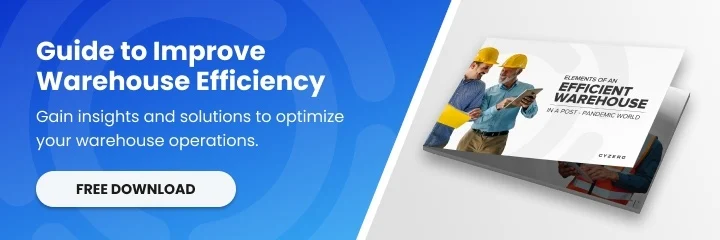Customers in the logistics and supply chain industry demand more technological capabilities from their service providers. The annual Third-Party Logistics Study analyzes the gap between what customers deem necessary in service providers’ IT capabilities and their satisfaction with current capabilities.
Click Here: Improve Your Operational Efficiency and Uptimes with Managed IT Solutions Solution
As you’ll see in the figure below, the gap has decreased over time, but logistics businesses are still not satisfying customer needs.

Source: 2020 Third-Party Logistics Study
It’s easy to understand that with the influx of newly available, innovative technology, it may be hard for businesses to keep up with technological expectations cost-effectively. To do this, businesses need a strategic plan to stay on top of industry trends and manage IT.
This article will review the importance of properly planning IT investments to close the technological gap and add value to the organization. For this, businesses need to build an effective technology organization capable of executing the vision without breaking the bank.
The Key is Strategic Technology Planning
Technology without strategic planning results in business inefficiencies and lost opportunities.
Having a team of technology professionals who can drive the technology side of the business, provide innovative logistics solutions, and add value to your customers is invaluable—it closes the gap.
New economic models, such as the shared economy, have opened opportunities for small to medium enterprises (SMEs) to access a large pool of qualified talent using technology service providers. For those still hesitant about outsourcing their technology operations, building your IT department or using a hybrid model is still available.
Let’s review each of these models, comparing them in four critical ways:
- Industry Knowledge
- Operating Costs
- Technical Skills
- Operational Effectiveness
Option 1: Build an In-House IT Department
An “In-house IT department” consists of one or more technology professionals permanently employed by the company to plan, implement, and manage all the technology operations of the business.
1. Industry Knowledge
One great benefit of having an in-house IT department is having a technology team with logistics technology experience. The logistics industry has very specific technological needs that do not resemble other industries. An in-house IT department will become attuned to the technologies required and the industry and business priorities.

2. Operating Costs
Hiring technology talent is extremely expensive. This is not to say you should be trying to avoid costs here. Avoid hiring underpaid or inexperienced professionals if you want to avoid serious headaches. How expensive can it get? Consider the following salary statistics from the United States Bureau of Labor Statistics:
- Computer Support Specialists: $54,760 per year or $26.33 per hour.
- Network & Computer Systems Administrators: $83,510 annually or $40.15 per hour.
- Software Developer: $105,590 per year or $50.77 per hour.
Additionally, consider that the average annual salary increase for technology professionals is 10.95%, with the lowest being 0.1% and the highest at 21.8%, per the Dice 2020 Tech Salary Report.
3. Technical Skills
Computer support specialists, system engineers, and software developers require different technical skills. With the proper budget, companies can hire qualified, certified, and specialized professionals. Specialization is important, considering the complex nature of technology. However, accessing pools of qualified professionals can be challenging due to the current I.T. talent shortage.
4. Operational Effectiveness
On-site staff can respond quicker to technical problems and engage more with company personnel to better understand business needs. This leaves the business well-positioned to deliver on business needs and shift priorities without waiting for the vendor to be available. In addition, on-site personnel allow the business to maintain greater control of its systems.
Option 2: Hire a Logistics Technology Service Provider
An “I.T. Service Provider” or “Managed Service Provider (MSP)” is a company that implements, manages, and provides technology support and strategic guidance to businesses. Many businesses use managed service providers to access world-class technology capabilities, cut expenses, and remain in touch with innovative technology trends.
1. Industry Knowledge
Some MSPs specialize in logistics technology. For logistics businesses wanting to outsource IT, this is how to get the most out of an IT service provider.
Non-logistics MSPs can provide generic technology solutions and tech support. Due to their lack of specialization, generic MSPs lack an understanding of specific logistics technologies (RF handhelds, wireless warehouse, RFID, dimensioning systems, WMS/TMS, etc.) and technological trends driving the industry.

2. Operating Costs
Costs vary depending on the provider, but a report from ReportLinker shows that C-suite executives have seen overall technology cost reductions between 10 and 30 percent by outsourcing their technology operations to a third party.
3. Technical Skills
Established technology service providers give businesses access to a specialized technology workforce. Teams at these organizations are certified by organizations such as the Computing Technology Industry Association (CompTIA) and technology vendors like Microsoft and Cisco, so you don’t have to worry about finding qualified talent.
4. Operational Effectiveness
MSPs can be very effective in implementation, management, and keeping up with the evolution of technology. However, you can expect to find operational challenges if they lack industry knowledge, are understaffed, or are not properly aligned with your business. Industry focus, ongoing planning and communication, and proper staffing levels are critical to operational effectiveness.
Option 3: Use a Hybrid Model
This could be the best approach for companies that can afford it.
A mix of in-house and outsourced technology management results in high business alignment, operational effectiveness, and cost savings.
In this model, the business builds a small in-house I.T. team consisting of at least one technology leader whose role is to align technology with business needs, protect the company’s interests, and track the operations of the technology service provider.
1. Industry Knowledge
In this model, the compound experience of a logistics-specialized MSP and a business-oriented IT leader enables the company to make strategic technology investments and accelerate ROI. The shared understanding of customers’ needs, industry trends, and logistics technology allows the business to exploit industry opportunities effectively.
2. Operating Costs
This is not as cost-effective as outsourcing all technology operations to a service provider. However, this hybrid approach remains more cost-effective when compared to hiring a full IT department.
3. Technical Skills
The technical skills in the Hybrid Model reap the benefits of the combined technical experience of the service provider and the internal I.T. team. This gives the business access to a large pool of experienced technology professionals that, if properly managed, will significantly accelerate engineering efforts and shorten technology adoption lifecycles.
4. Operational Effectiveness
Operational effectiveness also gets a boost when operating in this model as long as roles and responsibilities are clearly defined between the two teams. The in-house technical team can focus on its core competencies by strategically moving non-core IT functions to a service provider.
Partnering with the right technology provider expands access to innovative logistics technologies and experts, directly impacting the company’s capacity to execute and compete.
Summary
Because technology requires a team of technical and industry-experienced professionals, you need to consider more than just cost when deciding on your approach to managing technology. You’re in a business, so being cost-effective will always be a priority, but it is also essential to keep in mind the other factors that can impact your business’s success.
If you want to learn about warehouse digitalization and optimizing warehouse processes, you can follow us on LinkedIn, YouTube, X, or Facebook. If you have other inquiries or suggestions, please contact us here. We’ll be happy to hear from you.












